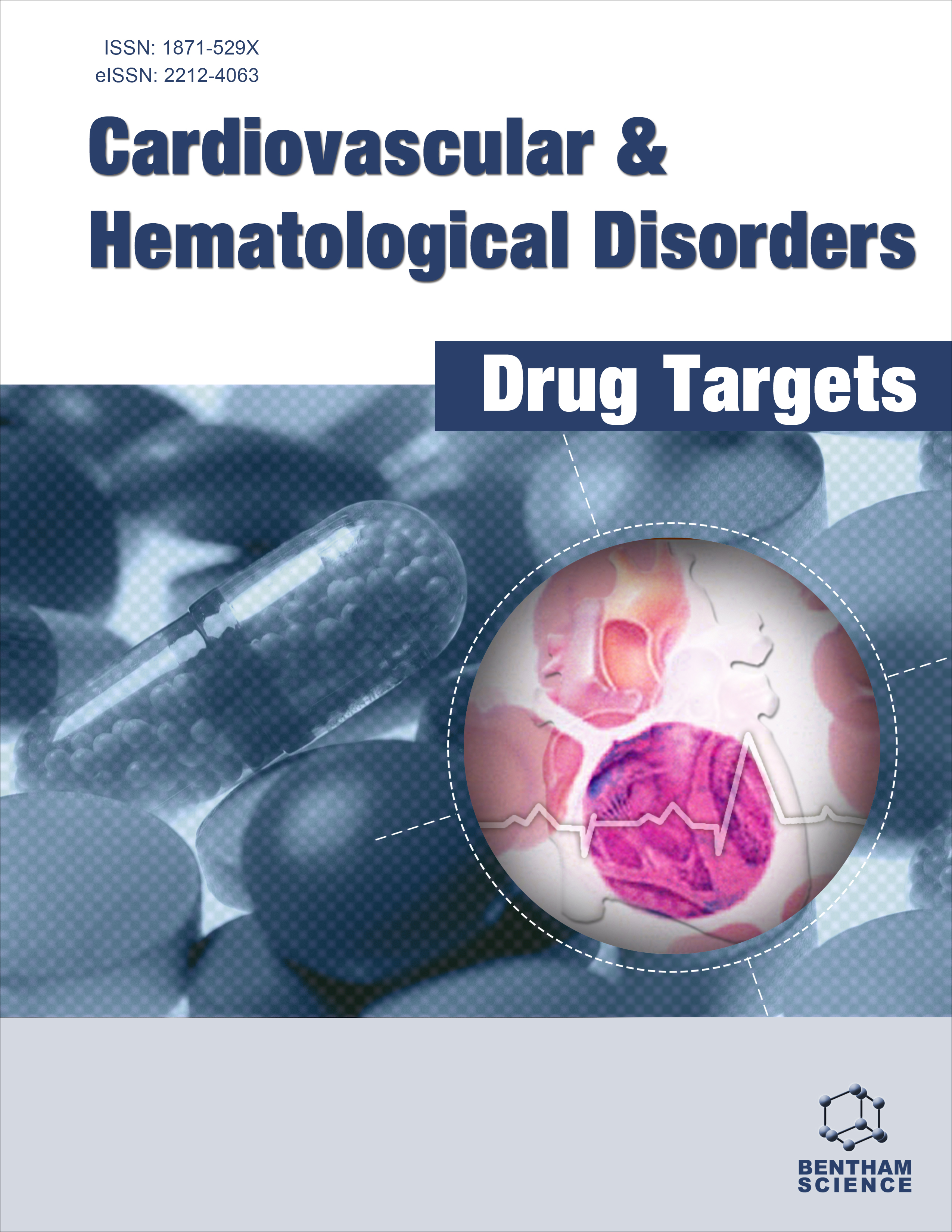- Home
- A-Z Publications
- Cardiovascular & Haematological Disorders - Drug Targets
- Previous Issues
- Volume 22, Issue 4, 2022
Cardiovascular & Haematological Disorders - Drug Targets - Volume 22, Issue 4, 2022
Volume 22, Issue 4, 2022
-
-
Two-way Road of Kidney and Hypercalcemia: A Narrative Review
More LessAuthors: Ziba Aghsaeifard and Reza AlizadehCalcium homeostasis is regulated by the dyad of parathyroid hormone and calcitriol, whereas kidney, intestine, and bone are the primary target sites. Elevation of serum calcium levels and hypercalcemia are likely markers of pathological conditions, particularly malignancy and hyperparathyroidism. Similarly, several dysfunctions within the body can direct hypercalcemia. Furthermore, chemicals and drugs can al Read More
-
-
-
A Comprehensive Review of Dilated Cardiomyopathy in Pre-clinical Animal Models in Addition to Herbal Treatment Options and Multi-modality Imaging Strategies
More LessAuthors: Navneet Kaur, Rahul K. Sharma, Ajay Singh Kushwah, Nisha Singh and Shilpa ThakurDilated cardiomyopathy (DCM) is distinguished by ventricular chamber expansion, systolic dysfunction, and normal left ventricular (LV) wall thickness, and is mainly caused due to genetic or environmental factors; however, its aetiology is undetermined in the majority of patients. The focus of this work is on pathogenesis, small animal models, as well as the herbal medicinal approach, and the most recent advances in i Read More
-
-
-
The Novel Role of the B-Cell Lymphoma/Leukemia 11A (BCL11A) Gene in β-Thalassaemia Treatment
More LessAuthors: Nahil H. Mahmoud Ahmed and Mei I Laiβ-thalassaemia is a genetic disorder resulting in a reduction or absence of β-globin gene expression. Due to the high prevalence of β-thalassaemia and the lack of available treatment other than blood transfusion and haematopoietic stem cell (HSC) transplantation, the disease represents a considerable burden to clinical and economic systems. Foetal haemoglobin has an appreciated ameliorating effect in β-haemoglobinopa Read More
-
-
-
Mechanisms Contributing to Acquired Activated Protein C Resistance in Patients Treated with Thalidomide: A Molecular Dynamics Study
More LessIntroduction: There is a high incidence of venous thromboembolism (VTE) in patients with Multiple Myeloma (MM), however; until now, the exact mechanisms behind VTE in MM are unknown, and some of the elements that may play a significant role are the treatment with an immunomodulator (IMiD) and acquired resistance to activated protein C (APC). Objective: The study aims to reveal the possible mechani Read More
-
-
-
Antihyperglycemic Effect of Rhamnus alaternus L. Aqueous Extract in Streptozotocin-induced Diabetic Rats
More LessAuthors: Smail Amtaghri, Omar Farid, Nadia Lahrach, Miloudia Slaoui and Mohamed EddouksBackground: Traditionally, the aerial parts of Rhamnus alaternus L. have been widely used in Mediterranean countries, including Morocco, to cure diabetes. Aim: This study aimed to evaluate the antidiabetic effect of Rhamnus alaternus aqueous extract in streptozotocin(STZ)-induced diabetic rats. Objective: This work aimed to evaluate the antihyperglycemic effect of Rhamnus alaternus aqueous extract (RAAE) in normal and d Read More
-
Volumes & issues
-
Volume 24 (2024)
-
Volume 23 (2023)
-
Volume 22 (2022)
-
Volume 21 (2021)
-
Volume 20 (2020)
-
Volume 19 (2019)
-
Volume 18 (2018)
-
Volume 17 (2017)
-
Volume 16 (2016)
-
Volume 15 (2015)
-
Volume 14 (2014)
-
Volume 13 (2013)
-
Volume 12 (2012)
-
Volume 11 (2011)
-
Volume 10 (2010)
-
Volume 9 (2009)
-
Volume 8 (2008)
-
Volume 7 (2007)
-
Volume 6 (2006)
Most Read This Month
Article
content/journals/chddt
Journal
10
5
false
en


